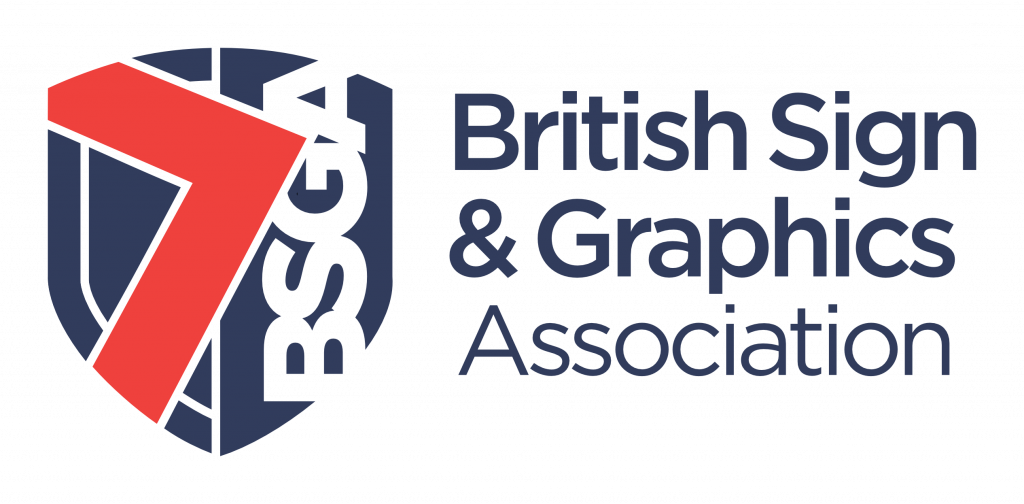Insights from The Sign Surgery with Joe Lacey, Innova Solutions
When we think about signs, we tend to focus on what we see: the bold graphics, the clever typography, the materials, and the overall wow factor. But as anyone in the industry knows, what’s behind the scenes matters just as much. And sometimes, it’s the humble fixings, including the tapes, adhesives, and fasteners, that make all the difference.
That’s exactly what this month’s Sign Surgery set out to explore. Led by Joe Lacey from Innova Solutions, a long-standing BSGA member, the session shone a light on this overlooked yet vital part of sign making.
“It’s incredibly important for sign makers,” Joe said, “but rarely given a lot of airtime.”
With Innova’s two decades of experience in supplying structural tapes and adhesives to the signage industry, Joe knows a thing or two about what works and what doesn’t. And more often than not, he said, failures come down to one thing: poor preparation.
“Most of the time, whenever I see failures, it’s down to incorrect prep,” he explained. “Tapes and adhesives are absolutely great at what they do, but they’re only as strong as whatever they’re bonded to. So if that’s a layer of dust or grease or grime, it isn’t going to stick very well!”
Three Steps to Stronger Bonds
Joe walked attendees through a simple but powerful three-step method: abrading, cleaning, and priming.
“Our sales director uses the analogy of sign making substrates being like a car bonnet” Joe joked. “If waxed & polished it has low surface energy, rain will run right off it. But if it’s anything like my car, the surface is much rougher, so rain is more likely to pool.”
Abrading increases that surface area, giving tapes and adhesives more to grip onto. Then comes the cleaning, with a high-purity alcohol-based cleaner like NovaBond IPA Surface Cleaner, which removes any leftover debris.
“You want to wipe in one direction,” Joe added, “so you’re not just pushing the muck around. And believe me, you’ll be shocked at how much dirt comes off.”
Finally, there’s priming. Joe showed how using a surface primer like Innova’s NovaBond Multi Surface primer can make a surface much more receptive to the adhesive.
“It’s not always needed with liquid adhesives,” he said, “but I’d always recommend it when you’re using tapes. In our tests, you’ll usually get around 60% stronger adhesion when you abrade, clean & prime. Sixty percent! That’s a huge difference.”
Real Talk, Real Scenarios
Throughout the session, Joe fielded a steady stream of questions from attendees, including BSGA board members, eager to troubleshoot real-world challenges.
What about bonding ACM for road signs?
“Abrade it where aesthetically possible,” Joe advised. “ACM can be a bit low-energy depending on the finish & you want to give that tape the best chance. However if you are unable to abrade the surface, we do offer tapes specifically designed for LSE surfaces”
And longevity? How long can outdoor tape fixings realistically last?
“If you use the right tape and it’s installed correctly, it’ll last as long as the sign does, at least aesthetically. But always do regular maintenance checks.”
Joe also touched on a common issue: discolouration or ‘read-through’ on ACM when using contact adhesives. His go-to solution? Innova’s SignFix 44, which he said was designed to avoid this problem thanks to its low shrinkage and low heat properties.
Storage, Weather, and Wind
Of course, not all challenges are technical. Sometimes, it’s the everyday logistics that trip you up.
“Keep tape in the box, especially if it’s in a van,” Joe said. “That’ll keep dust and dirt off it and that keeps your bond strong.”
He also shared tips on dealing with high wind load scenarios.
“It’s hard to give exact calculations for every job. But best practice? Full coverage. Use the pull-test data found on the technical data sheet as a guide, but don’t forget site conditions. And if you’re ever unsure, just give us a ring. We don’t just sell tape; we’ll walk through it with you.”
Other questions included bonding to powder-coated surfaces (use low surface energy tapes), whether tape applied to acrylics can be laser cut (depends on the liner), and even the challenges of bonding to painted walls and self-cleaning glass.
“You’ve always got to ask: what’s this surface made of? How clean is it? Can I abrade it? These little things really matter.”
Fixings: Not Just a Footnote
As the session wrapped up, one thing was clear: fixings are far from a footnote in sign making. They’re the foundation, and when done right, they can save sign makers from callbacks, replacements, and customer headaches.
“We get that time is money,” Joe said. “But spending a bit more time on prep will pay off tenfold. It’s about quality. It’s about pride in the work.”
For sign makers working in the sign trade supply chain, Joe’s top tips on storage, prep, and pressure are simple to implement and likely to save headaches and callbacks. They’re also a good starting point for training new staff. As Lacey summed up: “You don’t need to be an adhesive scientist to get it right, but you do need to know the basics.”
Thanks to Joe’s hands-on guidance and practical advice, attendees left with a renewed respect for the humble fixing and the knowledge to make their signs not only look great but last.
Got a burning question about signmaking? The next Sign Surgery on 21 May is the perfect place to get expert advice and practical answers. Bring your challenges, our experts are here to help.
Watch the session here…
